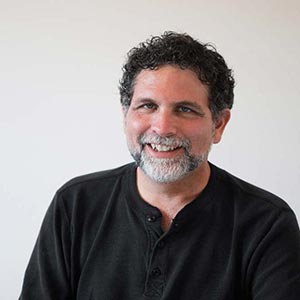John White is a friend, an explorer of consciousness, a literary agent and the author of numerous books including: The Meeting of Science and Spirit and What Is Enlightenment? After reading my recent post about the non-dual awakening of Ralph Waldo Emerson, John wrote to make it clear that the awakening that Emerson experienced should not be assumed to be the same as that which is described in Eastern traditions. John, I thought, was making an important distinction so I wanted to share his note with my readers.
First, Emerson was illumined and had moments of self-transcendence, but that is not the same thing as saying he attained to enlightenment or nondual consciousness, which is a permanent condition. He clearly was a mystic, but I don’t find statements in his writing which are indicative of moksha or turiya or God-realization. He was headed in that direction, of course. But he still had some intellectual barriers which, so far as I am aware, he did not surmount. (BTW, somewhere in his writings, Ken Wilber referred to Emerson’s eyeball-remark as indicative of vision-logic, if I recall correctly. And vision-logic is less than ultimate perception of reality.)
I don’t mean to knock Emerson, by the way, or take away anything from his distinct and much-needed achievement. I mean only to distinguish him from, say, Ramana Maharshi or Buddha or Jesus in terms of their noetic stature.
The rishis of ancient India had this absolutely profound comment which bears on everything people experience or say or write: “Knowledge is structured in consciousness.” One’s basic state of consciousness determines one’s understanding of experience. An infant has no knowledge or understanding of, let’s say, Santa Claus. A six-year-old whose consciousness has changed from the infant’s consciousness is capable of understanding Santa Claus as a figure dressed in a red suit who brings presents once a year. The continued growth of consciousness in that same child will bring him or her to, let’s say, a 16-year-old’s condition which—unlike the infant or six-year-old—is able to comprehend Santa Claus as a rendering of the historical figure of St. Nicolas of Cusa, a 4th century bishop who was famed for his generosity. But is that where one’s understanding of Santa Claus ends? No. Beyond the intellectual grasp of the 16-year-old is that of a mature adult who understands Santa Claus as the personification of selfless giving, especially as seen in parents, who lovingly give of themselves to nurture their children’s growth and development as they move into and through the magical stage of consciousness-unfoldment in which Santa Claus first becomes known to them.
So there are stages of growth to enlightenment, and Emerson was well along in that, but I myself wouldn’t hold him up as having attained sahaj samadhi/first-stage enlightenment. For example, his unitarian view of the nature of God was true but not complete. Following in the line of thought which developed in the 18th century, he rightly saw that the religion of Jesus was different from the religion about Jesus, and he tried to communicate that to the Harvard Divinity graduates and the public. The religion of Jesus is a Western enlightenment tradition; the religion about Jesus is a cult of personality better known as Churchianity.
But the unitarian articulation of its theology threw out the baby with the bathwater. The older trinitarian concept of God is, when properly understood, clearer, more detailed and more explanatory. The cultish consciousness of Churchianity drew a cartoonish picture of God as three persons: a Father, a Son and a Holy Ghost, mysteriously being one and the same. It is an example of Santa Claus being understood as a six-year-old.
However, the triune nature of God, as perceived by enlightened ones and mystics in exalted states, is perfectly true, but must be understood more deeply than the cartoonish picture. More deeply:
1. The Father (not the persona) is God in the transcendent aspect, in the unmanifest condition, as the Source from which all creation flows.
2. The Son (not the persona) is the Christ-consciousness at the center of our being for each of us, knowing ourselves in the depths of our awareness to be one with the Creator-Source (what Jefferson in the Declaration of Independence calls “nature’s God”) and which impels each of us to seek full realization of that through spiritual unfoldment to God-realization.
3. The Holy Spirit (not Ghost, which is a terrible translation of the concept) is the universal aspect of God which sustains and nurtures all creation.
The Father is transcendent, the Son is imminent and the Holy Spirit is omnipresent: the three aspects of God. However, the Father is actually genderless, whereas the Son is the masculine aspect of God and the Holy Spirit is the feminine aspect of God (which is why she is pictured in art as a dove, a female symbol).
Emerson missed all that by not questioning his own Unitarianism.
Jeff Carreira
Jeff Carreira is a mystical philosopher and spiritual guide. He is the author of eleven books on meditation and philosophy. He teaches online programs and leads retreats throughout the world that teach people how to let go of their current perceptual habits so they are free to participate in the creation of a new paradigm. To put it simply, he supports people to live a spiritually inspired life, free from the constraints of fear, worry and self-doubt, and aligned with their own deepest sense of meaning and purpose.
